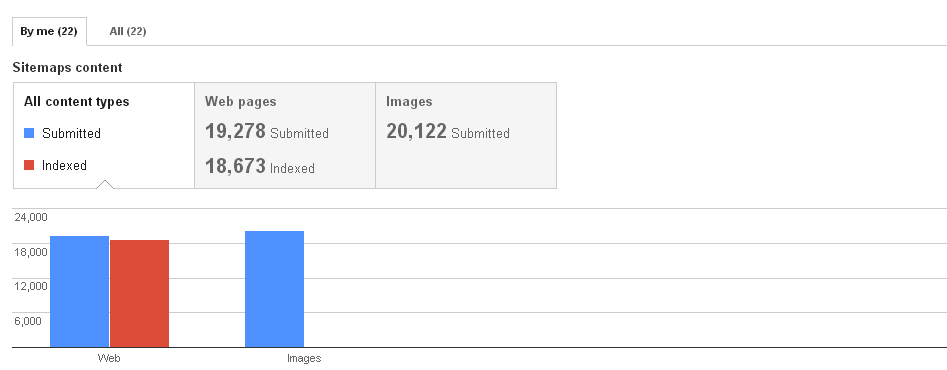Moz Q&A is closed.
After more than 13 years, and tens of thousands of questions, Moz Q&A closed on 12th December 2024. Whilst we’re not completely removing the content - many posts will still be possible to view - we have locked both new posts and new replies. More details here.
For an image which is in the CSS and not the HTML, can you add an alt tag?
-
I would like to improve SEO on a page with three big images, which are currently hosted in the CSS. The sample I am working with is at http://xquisitevents.com/about-us/
and I put my cursor over the big picture of the wedding dress with bouquet, I inspected the element and saw this code in a div tag:
#upperleft {
- background-image:url(images/AboutTopLeft.jpg);
Can I add an alt tag to the CSS somehow, or can I have it added to the HTML? What is the best way to handle this, to include keywords like
exquisite weddings and special event designs?
-
further to this you could look at having the image above some text and the text describes the image -- using z-index to layer them - hope that makes a little sense... if not google z-index

-
Hi Bridget,
There is no alt attribute in css, so no you cannot add it there,
There are a couple of things you can do.
1. Optimizing your image file names will at least give an indication of what the image is about and
2. Rethink your css and the use of background images. Specifically you could get the same effect as you have now without background images using a combination of absolutely and relatively positioned divs. This way you can have the same layout as now but with the image in the html rather than the css and alt tags will be available for them.
Check the link here for some demo code: http://stackoverflow.com/questions/8708945/how-to-position-text-over-an-image-in-css
Hope that helps!
Got a burning SEO question?
Subscribe to Moz Pro to gain full access to Q&A, answer questions, and ask your own.
Browse Questions
Explore more categories
-
Moz Tools
Chat with the community about the Moz tools.
-
SEO Tactics
Discuss the SEO process with fellow marketers
-
Community
Discuss industry events, jobs, and news!
-
Digital Marketing
Chat about tactics outside of SEO
-
Research & Trends
Dive into research and trends in the search industry.
-
Support
Connect on product support and feature requests.
Related Questions
-
Missing Canonical Tag for a PDF document
Error: Missing Canonical Tag
Technical SEO | | ahmadmdahshan
But URL is not a webpage it is a PDF document, is this fixable?0 -
# Tag - opacity and SEO impact
Hello,
Technical SEO | | Tiffany_Barn
I have a query animation 'fade-in-up' on my website: tiffanybarnard.com which moves the H1 tag slightly and fades it in from zero opacity to 1. Will this affect the SEO value of the H1 tag?
Thank you!0 -
Optimal use of keywords in header tag
what does optimal use of keywords in header tag actually mean given you indicate this as hurting seo factor?
Technical SEO | | Serg1550 -
Can I set a canonical tag to an anchor link?
I have a client who is moving to a one page website design. So, content from the inner pages is being condensed in to sections on the 'home' page. There will be a navigation that anchor links to each relevant section. I am wondering if I should leave the old pages and use rel=canonical to point them to their relevant sections on the new 'home' page rather than 301 them. Thoughts?
Technical SEO | | Vizergy0 -
Image Indexing Issue by Google
Hello All,My URL is: www.thesalebox.comI have Submitted my image Sitemap in google webmaster tool on 10th Oct 2013,Still google could not indexing any of my web images,Please refer my sitemap - www.thesalebox.com/AppliancesHomeEntertainment.xml and www.thesalebox.com/Hardware.xmland my webmaster status and image indexing status are below,
Technical SEO | | CommercePundit Can you please help me, why my images are not indexing in google yet? is there any issue? please give me suggestions?Thanks!
0
Can you please help me, why my images are not indexing in google yet? is there any issue? please give me suggestions?Thanks!
0 -
• symbol in title tag
We have a few title tags with a circular dot symbol, which is created by the code "•" Humans see a dot, but googlebot sees • Does this negatively impact our SEO, or is googlebot aware that **• == *** to human eyes
Technical SEO | | lighttable0 -
Header Tags
Ok so I am writing different pages and the first heading is an H3 just because I wanted to it be a certain size. Then as you see the content, I have an H1 tag. Example page: http://www.oxfordmshomes.net/condos/acadia-court-Oxford-MS you can see that "Acadia First" is the first thing you see on the page and it uses an H3 element. Long story short, my hierarchy is wrong. Does this have any negative effect on my SEO efforts?
Technical SEO | | blake-766240 -
Can hidden backlinks ever be ok?
Hi all, I'm very new to SEO and still learning a lot. Is it considered a black hat tactic to wrap a link in a DIV tag, with display set to none (hidden div), and what can the repercussions be? From what I've learnt so far, is that this is a very unethical thing to be doing, and that the site hosting these links can end up being removed from Google/Bing/etc indexes completely. Is this true? The site hosting these links is a group/parent site for a brand, and each hidden link points to one of the child sites (similar sites, but different companies in different areas). Thanks in advance!
Technical SEO | | gemcomp1230